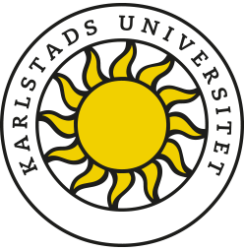Sofia Wijkmark, professor i litteraturvetenskap
Susanne Duek, lektor i pedagogiskt arbete
Kent Fredholm, lektor i pedagogiskt arbete
Anna Lindholm, lektor i pedagogiskt arbete
Projektet Rum för utveckling? Skolbibliotek i grundskolan har genomförts inom ramen för ULF (Utbildning–Lärande–Forskning) och involverat fem grundskolor i Karlstads kommun. Dess övergripande syfte har varit att fördjupa förståelsen för hur lärare och skolbiblioteksansvariga kan samverka genom kollegiala processer, hur de kan utveckla och nyttja skolbiblioteken på olika sätt, samt i förlängningen hur detta kan leda till samverkan i olika läsfrämjande aktiviteter. Vår centrala frågeställning har således handlat om hur verksamhetsutveckling kan bedrivas för att stärka skolbiblioteket som pedagogisk resurs med fokus på läsfrämjande. Kollegiala lärprocesser i ett utvecklingsarbete har större potential att lyckas när aktörerna har inflytande över vad de ska utveckla/lära. Genom att utforska sin egen verksamhet och samverka styr de sitt kollegiala arbete mot ett gemensamt formulerat mål. Vi har varit intresserade av att följa denna process.
Skolbiblioteken befinner sig i gränslandet mellan utbildning och kultur, och därmed också mellan utbildningspolitik och kulturpolitik. De ska inte bara fungera som en pedagogisk resurs i undervisningen, utan har även en mer allmän funktion relaterad till kultur och bildning som handlar om att främja intresset för läsning och litteratur. Litteraturförmedling har varit ett av de områden som vi särskilt har intresserat oss för. Hur ser beståndet ut på skolans bibliotek? Hur görs inköp och vad baseras inköpen på? Hur sker arbete med skönlitteratur i relation till biblioteket? Hur samarbetar personalen kring litteraturförmedling och hur involveras elever i läsfrämjande aktiviteter?
Inriktningen på ett ULF-projekt kan föreslås antingen av forskare eller huvudmän. I det här fallet kom önskemålet från barn- och ungdomsförvaltningens ledning, på förekommen anledning. En kartläggning av kommunens skolbibliotek hade nyligen gjorts, mot bakgrund bland annat av den statliga utredningen Skolbibliotek för bildning och utbildning (SOU 2021:3), som genomfördes av Gustav Fridolin och mynnade ut i lagförslaget om krav på bemannade skolbibliotek. I Fridolins utredning betonas bland annat vikten av en skolbiblioteksplan i relation till det systematiska kvalitetsarbetet i skolan: ”En biblioteksplan, som kopplas till det systematiska kvalitetsarbetet, kan spela en väsentlig roll i uppföljningen, analysen och utvecklingen av skolbiblioteksverksamheten. I en sådan plan synliggörs skolbibliotekets funktioner bland annat genom konkretiserade mål och visioner samt aktiviteter.” (SOU 2021: 3, s. 19) När projektet inleddes fanns ingen skolbiblioteksplan i Karlstads kommun, men en sådan har utarbetats under projekttiden av kommunens verksamhetsutvecklare. Från början var tanken att en övergripande plan för hela kommunen skulle vara klar och kunna implementeras på skolorna under projekttiden, men arbetet med planen försenades och därför fick denna idé lämnas därhän.
Medverkande från skolan har varit lärare, pedagoger och skolbibliotekspersonal, och dessutom har två verksamhetsutvecklare vid enheten för pedagogiskt stöd deltagit vid vissa tillfällen. Projektet drivs av forskare från ämnena litteraturvetenskap och pedagogiskt arbete: Sofia Wijkmark, Susanne Duek, Kent Fredholm och Anna Lindholm. Projektet påbörjades hösten 2023 och avslutas 2025.
Metodiskt har vi valt att utgå från aktionsforskning, vilket innebär att forskare och praktiker tillsammans arbetar med verksamhetsutveckling. Den inledande aktionen fokuserade på skolbibliotekets fysiska miljö och handlade om att inventera behov, möjligheter och utmaningar. Detta var ett förslag från oss forskare, dels för att ha en gemensam utgångspunkt att bygga vidare på, dels för att introducera möjliga områden att utforska i aktionerna. Deltagarna har därefter själva fått styra vilka aktioner som ska genomföras, beroende på vilka behov lärarna på de medverkande skolorna har identifierat för sina respektive skolbibliotek. Vid de gemensamma träffarna har resultatet från aktionerna presenterats för övriga grupper och nya aktioner har planerats. Vi har även diskuterat aktuell forskning om skolbibliotek, läsfrämjande modeller och arbetssätt och bjudit in forskare som har föreläst. Träffarna har på så sätt bidragit till inspiration och stöttning för de medverkande i det pågående arbetet med aktionerna.
Under våren 2025 sammanställer vi och redovisar resultaten i två artiklar och en rapport. 6 maj arrangerar vi dessutom seminarium på Karlstads universitet som kommer att vara öppet både för personal i skolan och forskare. Ett intressant resultat som vi kommer att belysa handlar om elevinflytande. På en av skolorna valde deltagarna att i ett tidigt skede genomföra en aktion som gick ut på att skapa ett biblioteksråd med elever, ett koncept som visade sig vara framgångsrikt och inspirerade de andra deltagarna att pröva det på sina skolor. Det visade sig att eleverna hade många goda idéer till exempel om hur den fysiska miljön kunde förbättras och om hur biblioteket kunde stimulera läsintresse genom boktips på olika sätt. Som ett annat exempel kan nämnas att samverkansarbetet med skolbiblioteket, som även är ett folkbibliotek, på en av skolorna (bland annat) handlat om att se till att lärare i alla ämnen, på såväl mellan- som högstadiet, får tillgång till bibliotekets lokaler även utanför ordinarie öppettider. Man har också anordnat ett par träffar i bibliotekets lokaler, där lärarna har fått information om hur biblioteket kan användas som en resurs i den egna ämnesundervisningen.
Ett tydligt resultat som framträder är vikten av fungerande samverkan mellan lärare, skolbibliotekarie (eller motsvarande) och, inte minst, rektor. För att kunna få till en bra skolbiblioteksverksamhet räcker det inte att ha en eller ett par eldsjälar på skolan. Det ska bli intressant att se vad som händer när den nya lagen träder i kraft, förhoppningsvis leder den till att skolbiblioteken får en mer framträdande roll i den pedagogiska verksamheten.
Sofia Wijkmark, Susanne Duek, Kent Fredholm, Anna Lindholm, november 2024
Vidare läsning:
Centerwall, U. (2022). Att ta plats och göra skillnad: Skolbibliotekariepraktiker i framgångsrika verksamheter. Bibliotekshögskolan, Högskolan i Borås /Diss./
Fridolin, G. (2021). Skolbibliotek för bildning och utbildning (SOU 2021:3).
Gärden, C. (2017). Skolbibliotekets roll för elevers lärande: En forsknings- och kunskapsöversikt år 2010–2015. Kungliga biblioteket.
Francisco, S., Forssten Seiser, A., & Olin Almqvist, A. (2024). Action research as professional learning in and through practice. Professional Development in Education, 50(3), 501–518.
Reason, P. & Bradbury, H. (2001). Handbook of action research: Participative inquiry and practice. Sage.



